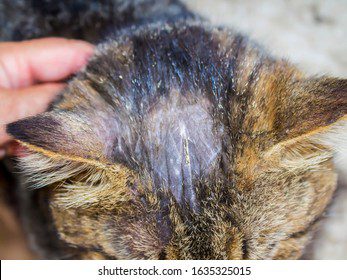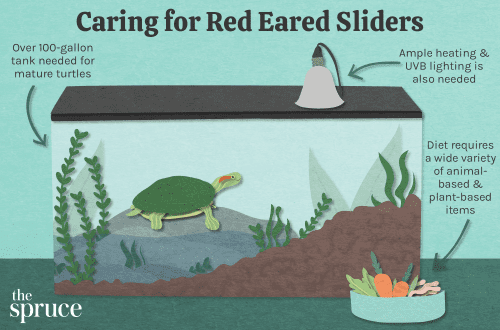
How to cure lichen in a cat – features of treatment and prevention of the disease in cats
Ringworm refers to an infection of the skin of a pet. The main causative agent of the disease is a fungus. At the same time, depending on the type of fungal spores, cats may develop microsporia or trichophytosis – the main types of lichen. If for a human body with normal immunity, the infection is not terrible, then for an animal, lichen is a particular danger. First of all, this is due to the fact that the advanced form of the disease causes blindness and even death of the pet.
It is possible to become infected with pathogens that provoke various forms of lichen by direct contact of a healthy and sick animal. The infection is very resistant to the effects of external environmental factors and therefore can penetrate into the apartment with dust or dirt on the sole of the shoe. Based on this, the possibility of infecting a cat at home is as high as in street animals. Animals with a weakened immune system due to an unbalanced diet are more susceptible to infection.
Contents
Symptoms of trichophytosis in cats
From the time of contact of a healthy animal with an infected cat until the first manifestations of the disease, take one to five weeks. Most often, localization of foci of lichen can be found on the skin of the head and more rarely on the tail near its base and paws of the animal. In this case, the symptoms of lichen in cats include the following signs:
- redness in areas of the skin affected by lichen – erythema;
- areas of pronounced alopecia – bald areas of the skin, covered with a pityriasis layer of plaque;
- small, well-defined spots that form on the skin of the animal, as well as tubercles that grow to fairly large sizes as the lichen progresses;
- scaly and keratinized formations;
- unbearable itching all over the body of the animal;
- depression in the character of a complete refusal of food and a sharp decrease in weight in a cat.
With trichophytosis it is possible hair follicle damage. Because of what there is a possibility of penetration of a purulent infection. Follicular pustules are formed, which burst after a while, turning into extensive purulent lesions of the skin.
Microsporia – symptoms of ringworm
Microsporia in most cases has a latent asymptomatic form of the disease. Very rarely found areas with broken hairs wool and scaly formations on the skin of a cat. As in the case of trichophytosis, microscopy has clearly defined lesions on the head behind the ears at the base of the tail and limbs of the pet.
But in a situation where the animal’s immune system is greatly reduced, that is, the protective function of the body works poorly, which is usually the result of an unbalanced diet, improper or insufficient care, then microsporia takes atypical forms of lichen, which accompanied by certain symptoms..
- Severe itching, hair loss without focal molting, the skin is very dry, which leads to the formation of dandruff and wounds. In this case, the disease can proceed with limited inflammatory processes on the back of the nose with the formation of characteristic minor areas with severe itching.
- Hilly, pronounced with a clear contour of damage to the skin – the first signs of ringworm.
- Papules, pustules that form on the skin without hair loss – all this is a pustular form of dermatitis.
Activities for the diagnosis of lichen in cats
Diagnosis of trichophytosis or microsporia can only be carried out by experienced veterinarians on an outpatient basis. Ringworm is similar to pyoderma, dermatitis, and some forms of allergies. That is why independent procedures for the treatment of lichen in cats obtained through dubious sources, except for the deterioration of the animal’s well-being, will not lead to anything.
To establish an accurate diagnosis of lichen, you need to take a scraping from the affected area of uXNUMXbuXNUMXbthe skin that has not been treated. The material, infected, deprive lends itself to microcopying, after which sown on a special medium. Only on the basis of the laboratory results obtained, the diagnosis is established.
In addition, an experienced veterinarian is required to highlight the affected areas with an ultraviolet lamp. In most cases, cat hair affected by microsporum fungi has an emerald green glow, which is absent in trichophytosis. If the owners of the pet have suspicions that the cat has lichen, you should not hesitate and immediately go to the veterinary clinic, since self-diagnosis is impossible, and the rate of development of the disease is very high.
Lichen in cats – treatment and prevention
According to the advice of professional veterinarians, for the prevention of lichen in cats, you need to follow simple guidelines.
- Restriction, and the best is complete isolation from the contact of a pet with street cats. Disinfection of bedding, toys and pet care items.
- Improving the immune system of the animal – a complete balanced diet with a complex of essential minerals and vitamins.
- Timely vaccination of the cat.
How to cure lichen in a cat at home
If, for some reason, the owner of the cat does not have the opportunity to get an appointment with an experienced veterinarian, then you can try traditional medicine:
- pharmacy iodine;
- sunflower oil;
- paper or wood ash.
In this case, for the use of folk remedies, you need to do the following:
- ashes from burnt paper are mixed with sunflower oil to a mushy substance;
- with the help of iodine, the lesion and the area adjacent to it are processed;
- a substance of oil and ash is applied to the affected area;
- the procedure should be repeated 2-3 times a day.
Although this method does not have side effects, it will not always be effective.
What is the treatment for lichen in a domestic cat?
Trichophytia and microsporia are treated in one way with the help of drugs. If we are talking about the initial stage of lichen, then it is recommended to use therapeutic and prophylactic vaccination, which in most cases leads to a positive result. When the disease covers a large volume of the cat’s skin, antifungal drugs are used, both local and oral.
In case of complications of lichen, which has developed into purulent dermatitis, the cat is prescribed course of antibiotics with a wide spectrum of activity. In addition, it is recommended to use immunostimulants. To speed up the treatment process, the animal is shaved baldly and a remedy for lichen in cats is used. Fungal lesions in cats are treated with a 10% solution of salicylic alcohol and 5% iodine monochloride, as well as clotrimazole in the form of an ointment. To relieve stress in an animal, injections of cotazol are given.
Canine lichen can be transmitted to humans
Anthropozoonosis or shearing form The disease can be transmitted from domestic cats to humans. Trichophytosis and microsporia most often affect young children, as their immunity cannot fully fight the disease. A person can become infected only through direct contact with a sick animal.
Especially in a complex form, trichophytosis occurs in people, accompanied by the formation of inflammatory purulent tubercles on the skin. In addition, the head and nails on the hands and feet are affected. If lichen is found in a cat, the animal must be immediately isolated from contact with children. After contact with a pet, be sure to disinfect hands using weak alkaline solutions.





